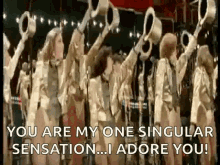

Only from Pepé does the obvious escape (unlike Penelope), and it is from this one ridiculous fact that every Pepé Le Pew cartoon derives.īut if the filmmakers’ point-of-view never denies Pepé’s divorce from reality, it never condemns that divorce either. While the character was something of an outlet for a girl-shy animator, Chuck Jones also conceded that Pepé was “so sure of his appeal to women that it never occurs to him that his attentions might be unwelcome, or even offensive.” Jones also wrote that “Pepé cannot know that he smells.” Every cartoon features human characters fleeing in terror from the skunk’s odor, and Penelope’s reactions to the one-two punch of his smell and his embraces is never ambiguous. And the range of settings within the francosphere – Paris, the Alps, New Orleans, the French Sahara – gave layout artist Maurice Noble space to create some truly lovely designs.īut these visuals were in service to the ongoing chase of Penelope by Pepé, who never has a clue that it isn’t a mutual attraction. Jones also moved toward more subtle expressions and emotive posing, so that the later cartoons showcase more nuanced animated performances. Director Chuck Jones’s style evolved considerably over the decades that the cartoons were produced, with both Pepé and Penelope becoming lankier and scruffier. Variety comes from the dialogue (always a strange mix of English, real French, and fake French) and the animation. Unlike the Road Runner or Sam Sheepdog series, there aren’t many variations on the basic gag to be found Penelope runs away, gets caught, and escapes, over and over again. To watch all Pepé Le Pew’s cartoons in a row is, for the most part, to see the same film 16 times. This template was obeyed rigorously throughout the series.
The chorus line looney tunes series#
His onscreen partner in the first cartoon was an American tomcat in disguise, and a follow-up cartoon featured a chihuahua in a fur coat, but the template for the series was set with 1949’s Oscar-winning For Scent-imental Reasons: somewhere in France (or francophone territory), poor Penelope Pussycat has a white stripe marked down her back, Pepé mistakes her for a beautiful lady skunk, and he pursues her across the country without heed for the impact of his odor or his overbearing manner. The French accent, overactive libido, and massive overconfidence are all there. Many of the Looney Tunes were works in progress, their personalities and appearances developing gradually, but Pepé Le Pew was almost fully-formed in his first appearance. That road has seen some unusual turns by Looney Tunes standards since it set off in 1945, with the cartoon Odor-able Kitty. La route de la pew was trending toward retirement long before this spring. Even in the heyday of the Looney Tunes theatrical shorts, he wasn’t among the biggest cartoon stars (his series runs 16 cartoons and two cameos, compared to Bugs Bunny’s 160), and his role in post-classic projects that utilize the Looney Tunes have been marginal.


But Pepé’s career has been trending downhill for some time. That Pepé Le Pew should have ended up as cannon fire is in a way unsurprising, given the content of his cartoons. It’s a not atypical playout of skirmishes in America’s never-ending culture wars trending on social media blows something out of proportion, it very quickly vanishes from the public discourse when the latest fuss comes along, and on the cycle goes no matter how ridiculous it gets. For all the noise that fact stirred up a few months ago, the skunk’s absence doesn’t seem to matter much in reviews of the film, one way or the other. Space Jam: A New Legacy is out, reactions are in, and Pepé Le Pew is still not in the movie.


 0 kommentar(er)
0 kommentar(er)
